
高速铁路(英文)(High-speed Railway) 知网万方维普
- 国级普刊
- 主管单位:
教育部
- 主办单位:
北京交通大学
- 国际刊号:
2949-8678
- 国内刊号:
10-1922/U2
- 学科分类:
- 字数:
12000-26000
- 有无基金:
/有基金 100.0%
- 周期:
CN外文-季刊
- 特殊属性:
外文期刊
- 电话:
010-51684749(202401期)
- 邮箱:
hsr@bjtu.edu.cnsgu@bjtu.edu.cn(202401期)
- 复合因子:
0
- 综合因子:
0
- 收录:
知网,万方,维普
- 级别:
国级普刊
期刊简介
《高速铁路》期刊已被查看: 次
更新频次
单位占比
一作占比
/有基金-100.0%投稿指南
1、投稿方式:在线投稿。
2、刊内网址:(202401期)
https://www.sciencedirect.com/journal/high-speed-railway
https://www.editorialmanager.com/hspr(投稿系统)
3、期刊网址:
https://www.keaipublishing.com/en/journals/high-speed-railway/
4、主办单位官网网址:
http://news.bjtu.edu.cn/info/1011/43510.htm
5、刊内邮箱:hsr@bjtu.edu.cn;sgu@bjtu.edu.cn
6、刊内电话:010-51684749
7、期刊刊期:季刊,逢季末月出版。
2024年4月16日星期二
《高速铁路(英文)》(High-speed Railway)期刊简介
【微信公众号信息】
新刊简介
High-speed Railway (《高速铁路》英文刊),ISSN 2949-8678,是由北京交通大学主办,卢春房院士担任期刊主编,科爱出版发行的国际期刊。入选了2022年度中国科技期刊卓越行动计划高起点新刊项目。HSR为交通运输类国际英文学术期刊,OA开放获取出版模式。载文类型包括综述性论文和研究性论文。
HSR以传播新理论、新技术,探讨高速铁路发展中的理论与实践问题为导向,坚持理论与实践、引进与创新相结合的方针,努力反映高速铁路规划与设计、运营与管理,高速铁路设备及铁路工程等方面的最新成果,促进国际间的学术交流与合作,为提升我国高速铁路事业的国际影响力,促进世界高速铁路技术的发展服务。
收稿范围
1)高速铁路规划与设计:高速铁路规划,电气化与自动化技术,通信信号,车辆设计理论等;
2)高速铁路基础设施:土木工程技术,铁路基础设施,道路、桥梁、隧道、地下工程,路基和路面的性能和维护等;
3)高速铁路设备与系统:机车车辆,制造技术,钢轨,车辆-轨道耦合系统,超导磁悬浮技术,铁路工程等;
4)高速铁路运营与管理:高铁政策,轨道管理,高铁信息管理,列车调度管理,列车运营与控制等;
5)其他相关主题,如高速铁路安全, 环境保护和可持续发展等。
期刊在科爱官网上线,投稿通道已正式开通,欢迎相关领域的学者、师生朋友们积极投稿!期刊收录的所有文章都经过严格、高水平的同行评审,一经收录将发表在月活用户超过1700万的ScienceDirect平台,供领域内的学者及全球读者免费阅读、下载及引用。
期刊主页:
https://www.sciencedirect.com/journal/high-speed-railway
投稿通道:
https://www.editorialmanager.com/hspr/default2.aspx
微信公众号:High speed Railway
联系邮箱:sgu@bjtu.edu.cn
作者指南Guide for Authors
【官网信息】
INTRODUCTION
Types of paper
Full-length/ Research Article A complete report on original research and/or clinical studies A structured abstract is required. A clear structure is required, which should contain but not confined to the following sections:
Introduction
Material and methods
Results
Discussion
Conclusions
Author's contribution (For details please visit the link)
Ethic statement
COI
(acknowledgments/clarification)
Bibliography
Appendices (including multimedia components)
Review Article
A substantial overview of original research. The reviews should give a succinct overview of a particular topic, usually with a comprehensive bibliography, generally, also contains a table of contents.
Review Article (Word limit: 7,000-9,000) A substantial overviews present a complete overview of the state of the art with a comprehensive bibliography, generally, also contains a table of contents. It should cover topics that have seen significant development or progress in recent years, with comprehensive depth and a balanced perspective. Review articles should NOT include unpublished material such as unpublished/original data, submitted manuscripts, or personal communication.
Mini Review (Word limit: 3,000-4,000) A succinct and clear summary that covers focused aspects of a current area of investigation and its recent developments, providing up-to-date developments, concepts, etc.
Editorial Generally from the (guest) editor of the publication. Can be Foreword, Editorial, Guest Editorial, Preface, etc.
Short Communication Short report or announcement of research, usually claiming certain results, which present original and significant material for rapid dissemination. Short Communications are expected to have a higher than average impact on the field rather than report on incremental research.
Case Report (Word limit: 1500) Case Reports (CR) are brief reports of individual patients or small cohorts reporting novel findings of unexpected clinical significance. They are peer-reviewed articles under xxx words in length. Methods and additional figures and display items may be included in the Supplementary Information.
Meeting Reports, News & Announcements
Meeting reports Summary of a relevant symposium, workshop, etc. Or, information about a conference (can be a description of the venture, but also a visit report of a scientist who has attended a conference).
Letter to the Editor (Word limit: 2,000)
Any items of interest to the wide audience of the publication. The items includes a letter to the editor commenting on previously published articles or a reply to the letter. (The letter or reply needs a "refers-to" DOI or PII number; or argumentative communication, like papers in a discussion, or commentaries, etc.(Subsequent discussion papers need a "refers-to" DOI or PII number).
Perspective (Word limit: 3,000)
An article presents a new and unique viewpoint on existing problems, fundamental concepts, or prevalent notions on a specific topic, propose and support a new hypothesis, or discuss the implications of a newly implemented innovation. Perspective pieces may focus on current advances and future directions on a topic and may include original data as well as personal opinion.
As a guideline, Perspective should not normally exceed 3,000 words. Perspectives allow up to 30 references; citations should be selective. Perspectives should include no more than 4 display items (figures, tables and/or boxes).
……
更多详情:
https://www.keaipublishing.com/en/journals/high-speed-railway/guide-for-authors/
《高速铁路》同类交通运输期刊
-
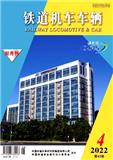
铁道机车车辆(不收版面费审稿费)
北核,高T3,武B+
CN中文-双月刊影响因子0.655
-
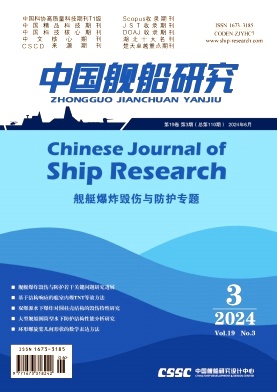
中国舰船研究(原:国外舰船工程)
北核,科核,CSCD扩,武A-,高T1,高T2,CACJ-权威
CN中文-双月刊影响因子1.306
-
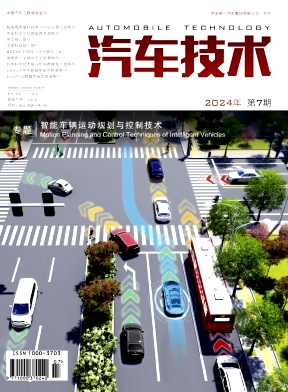
汽车技术
北核,科核,CSCD扩,武A,高T2
CN中文-月刊影响因子1.405
-
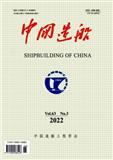
中国造船
北核,CSCD,科核,武A-,高T1,EI(中国2024)
CN中文-双月刊影响因子0.969
-
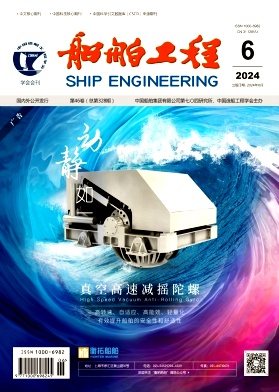
船舶工程
北核,科核,CSCD扩,高T2,高T3,武B+
CN中文-月刊影响因子0.722
-
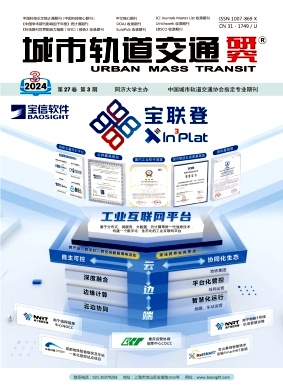
城市轨道交通研究
北核,科核,武A-,高T3
CN中文-月刊影响因子0.976
-
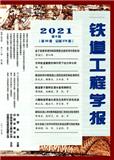
铁道工程学报
北核,CSCD,科核,武A,高T2,EI(中国2024)
CN中文-月刊影响因子1.772
-
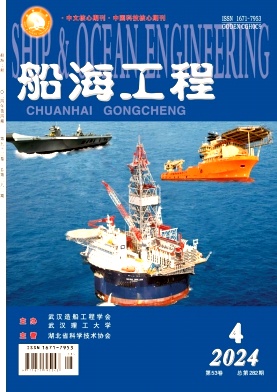
船海工程
北核,科核,高T2,武B+,CACJ-扩展
CN中文-双月刊影响因子0.59
常见问题
-
高速铁路杂志社官网、联系方式是什么?
高速铁路杂志社官网:https://www.sciencedirect.com/journal/high-speed-railway
投稿网址:https://www.editorialmanager.com/hspr联系电话:010-51684749(202401期)
投稿邮箱:hsr@bjtu.edu.cnsgu@bjtu.edu.cn(202401期) -
高速铁路杂志是核心期刊么?
高速铁路不是核心期刊,级别是:国级普刊, 是:交通运输分类下的知网,万方,维普收录的期刊。
-
请问你们是高速铁路杂志社吗?
我们不是《高速铁路》杂志社。本站主要从事期刊信息展示与期刊推荐,不是任何杂志官网,直投稿件请联系杂志社。本站仅提供免费的学术指导、论文辅导、期刊投稿信息整理收集服务。
-
你们指导服务后可以保证文章被发表吗?
期刊发表的成功与否,主要取决于文章内容的质量。编辑老师会根据研究领域、创新性等多因素进行考量。我们会帮助您理解期刊的发表要求,助力提升发表几率,从而增加发表的机会。
-
晋级论文能否在报纸上发表?
在学术界,论文的发表往往被视为研究者职业发展的重要一环。晋级论文,即为了获得更高职称或学术地位而撰写的学术论文,通常需在专业期刊上发表。然而,许多人可能会问
